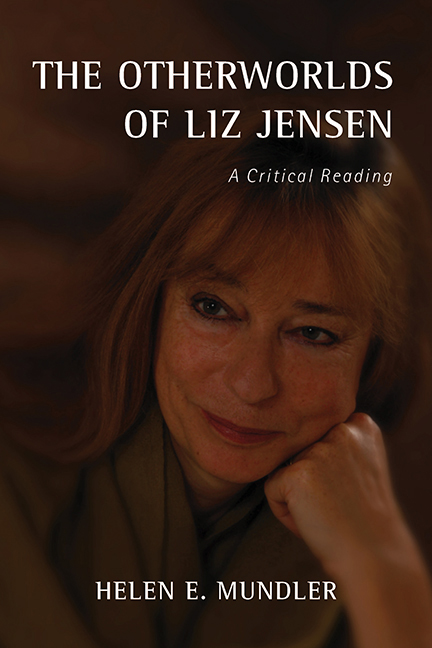Book contents
- Frontmatter
- Dedication
- Contents
- Acknowledgements
- List of Abbreviations
- Introduction
- 1 Egg Dancing: Paving the Way for Otherworlds in Time and Space
- 2 Ark Baby and the Return to the Nineteenth Century
- 3 Island Life: The Pure “Ustopia” of The Paper Eater
- 4 Liz Jensen's Murder Mysteries
- 5 From Family Romance to the Detective Novel
- 6 New Rules, New Otherworlds: Jensen's “Third Wave”
- 7 Ecofiction, Rapture Fiction
- 8 The Uninvited: The Most Radically “Other” World to Date
- Conclusion
- Notes
- Bibliography
- Index
1 - Egg Dancing: Paving the Way for Otherworlds in Time and Space
Published online by Cambridge University Press: 09 May 2017
- Frontmatter
- Dedication
- Contents
- Acknowledgements
- List of Abbreviations
- Introduction
- 1 Egg Dancing: Paving the Way for Otherworlds in Time and Space
- 2 Ark Baby and the Return to the Nineteenth Century
- 3 Island Life: The Pure “Ustopia” of The Paper Eater
- 4 Liz Jensen's Murder Mysteries
- 5 From Family Romance to the Detective Novel
- 6 New Rules, New Otherworlds: Jensen's “Third Wave”
- 7 Ecofiction, Rapture Fiction
- 8 The Uninvited: The Most Radically “Other” World to Date
- Conclusion
- Notes
- Bibliography
- Index
Summary
IN A NUMBER OF WAYS, Egg Dancing paves the way for what is to come in the first “wave” of Jensen's oeuvre, and beyond. Published in 1995, the events it portrays take place at the turn of the new century, a particularly rich metaphor for change, for a world turning upside down, and, in a movement from macrocosm to microcosm, for personal apocalypse and epiphany. Hazel opens her first-person narrative by commenting how much she herself has changed during this period:
So dates shift, and one century becomes another, amid much ballyhoo … But the world doesn't change. It's people that change.
Take me.
Have I changed?
Are courgettes green? (Ed, 1)
Regarding the journey of change which Hazel undergoes, Egg Dancing can be considered to have affinities to the Bildungsroman, although it is very condensed in time.
Egg Dancing is set in a near future with regard to the time of writing; the turn of the century and the millennium have already taken place (1). The setting allows Jensen to decorate the margins, as it were, of unwritten history, inventing, for example, a mass hallucination of the Angel Gabriel over Birmingham in the June prior to the events of the novel (189). The language used to designate Britain's institutions also creates a degree of differentiation and destabilization: in the wake of the Perfect Baby scandal, in which Hazel's gynecologist husband, Gregory, attempts to genetically engineer a baby without flaws in order to generate revenue, he finds himself answerable to a “Deciding Authority,” and is sent to a “Correction Facility” (271), terms that are not usually used in Britain. Regarding setting and language, then, there is a certain departure from the real, and an “otherworld” is thus already formed.
Egg Dancing is constructed on a network of imagery of fertility/infertility, birth/miscarriage, the desire for a child versus the absence of this desire, and so on, themes that, in one guise or another, will run through all Jensen's novels.
- Type
- Chapter
- Information
- The Otherworlds of Liz JensenA Critical Reading, pp. 22 - 39Publisher: Boydell & BrewerPrint publication year: 2016

